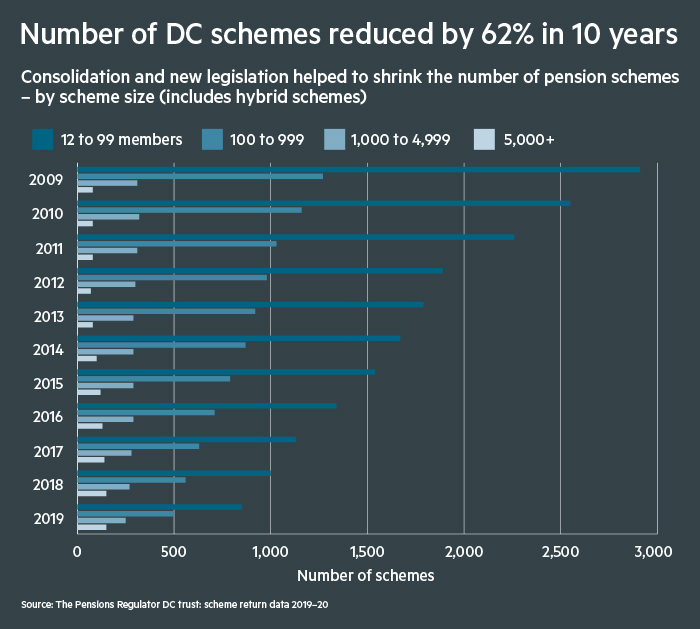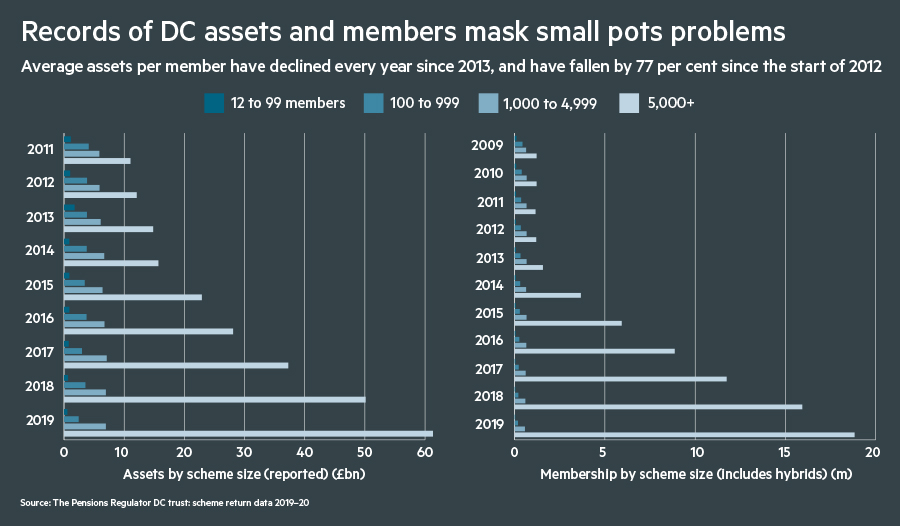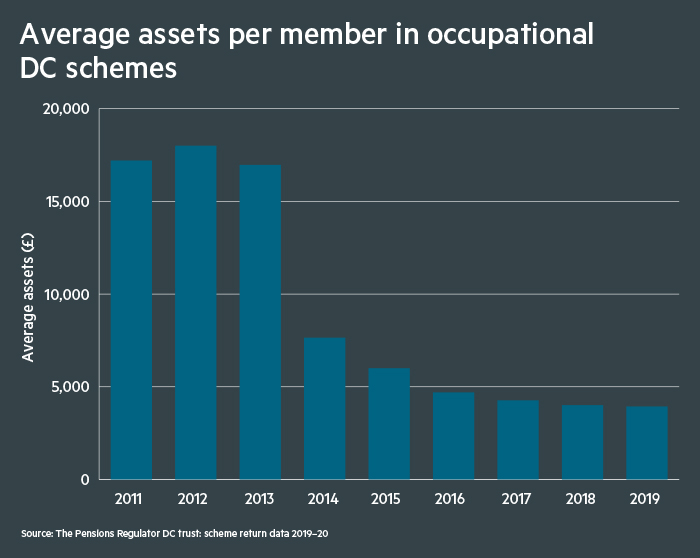Data crunch: Defined contribution master trusts are going to work. That is as certain as the success of automatic enrolment.
With life expectancy continually increasing, the government needs to control the cost of state pension provision and so it cannot afford for AE to fail, which means it also cannot afford for the pension schemes investing the AE funds to fail either.
Achieving this aim is not easy. To alleviate the stress on state pension provision, policymakers need to ensure the pension schemes investing AE funds are financially robust, governed and tightly regulated, environmental, social and governance integrated, cyber secure, user-friendly, scam safe and providing value for members.
In 2010, there were 4,560 schemes with 12 or more DC members (including hybrids), for which the Pensions Regulator and professional trustee companies would need almost unlimited resources to satisfactorily regulate and govern. Therefore, a macro plan was needed to reduce the amount of pension schemes.
Fortunately in 2010, there was a reasonable amount of low-hanging fruit to make a start: a number of legacy schemes with ancient charging structures and limited governance. Merger and acquisition activity also assisted in consolidating the number of established providers.
With continuing regulation and legislation, including charge caps and so on, the total number of schemes with 12 or more DC members (including hybrids) has declined by 62 per cent from 4,560 to 1,740.

What is the optimum number of schemes?
The Australian model has been used as a comparison, although it is more mature than the UK’s, holding around $3tn (£1.6tn) of assets under management and growing. The number of individual schemes fell by 96 per cent in the 11 years to 2014, and reduced further from 44 in March 2014 to 24 by December 2017.
To improve our DC master trusts, TPR initiated a reauthorisation process in 2019. Of the existing 90 master trusts, only 38 submitted applications for reauthorisation (37 were granted), reducing the overall size of the market by 58.8 per cent.
Importantly, the successful 37 master trusts have made a considerable investment in obtaining reauthorisation, in addition to the required capital adequacy reserves and the infrastructure investment required to set the master trusts up initially. Any investment seeks a return, so what is the expected payback?
Revenue for the master trust providers relies upon a mix of:
-
Increase in membership;
-
Some employer charges — up to £2,000 a year (Ensign);
-
Contribution charges (Nest and Workers Pension Trust, 1.8 per cent);
-
Monthly fixed fees (for example, £1.50 a month);
-
Fee from AUM (for example, 0.3 per cent a year);
-
Increase in AE contributions (April 2019); and
-
Receiving transfers in.
How long before this investment is recovered? More than 20 years, based on £1bn AUM at 0.3 per cent fee, which equals £3m per year. According to Nest’s 2019-20 report and accounts, the pre-Covid projection was breakeven by 2026 and repayment of its loan facility, granted by the government to establish Nest, by 2039.
Pandemic hits master trusts
Within a year of obtaining reauthorisation, the master trust providers have been hit with a perfect storm, including Covid-19 and a consultation from the Department for Work and Pensions on the charge cap, questioning the justice of the monthly fixed fee for smaller investors. Asset values saw equities reduce by 25–30 per cent, and even now are around 10 per cent down unless invested in technology and precious metals.
We are now also expecting a global recession. Job losses will lead to lower contributions than projected, with between 40 and 50 per cent of master trust members already being deferred. All of these factors place pressure on the revenue expected, which stretches the 20-plus years plan out even further.
How long can some master trust providers continue, particularly those without the ‘loan facility’ provided from the taxpayer?
Employee benefit consultancies and some insurers can support their master trusts, through the revenue created from other activities and consolidation campaigns to transfer clients with own trust schemes and group personal pensions. Nevertheless, some market commentators have predicted the number of authorised master trusts could fall to between 15 and 20 within as little as 10 years.
Small pots problem lingers
One main factor is the operational cost of deferred members with small funds. Research from the Pensions Policy Institute estimates that the number of deferred pension pots in the UK DC master trust market is likely to rise to around 27m in 2035 from 8m in 2020. In addition, financial instability in master trust schemes arising from too many small pots could, in extreme circumstances, result in trustees triggering an event to wind up the scheme. 

To help resolve this, the PPI has suggested a number of alternatives and acknowledges a combination is likely to create the most appropriate outcome. These include the introduction of the pensions dashboard, provider consolidation and pot-follows-member rules.
The many millions of pounds invested by master trusts so far is not the end of the spending requirement. On the regulation side, master trusts are moving to the supervision phase, with either quarterly, half-yearly or annual meetings with TPR. I believe all but one are initially on quarterly meetings.
Fewer schemes mean TPR’s resources can be deployed more efficiently and effectively. Pension mega funds could also be used in various ways. There is a £1tn gap in the UK infrastructure sector that needs plugging, especially if we are to take advantage of being free from our previous EU constraints, so there may be other political cards at play.
Whether or not big is always best, it seems a whole heap better than what we had in 2010 and before.
Early in my career, I recall a defined benefit member retiring and having to take additional voluntary contribution benefits simultaneously — as that was the requirement back then. This was an early retirement, but meant that the AVC fund suffered an early encashment penalty of 95 per cent of its value. This was simply wrong.
Where we are now, and where we are heading in the future, may not be perfect but currently it just feels better.
Paul Tinslay is a professional trustee at Dalriada Trustees






















